Chart Color Schemes
est. as @ -- *
ABS ERP | -- people | --
2021 Census | -- people
Sales Activity
Curious about local property values? Filter the chart to assess the volume and appreciation (including resales) trends and regional comparisons, or scroll to the map below view this information at an individual property level.
Find a Recent Sale
Sales Detail
Population
Paddington - Moore Park is positioned among the lower quartile of areas assessed nationally for population growth based on AreaSearch's assessment of recent, and medium term trends
Paddington - Moore Park's population was approximately 15,555 as of August 2025, according to AreaSearch's analysis. This figure represents an increase of 762 people, a 5.2% rise from the 2021 Census which reported a population of 14,793. The change is inferred from the estimated resident population of 15,565 in June 2024 and address validation since the Census date. This results in a population density ratio of 4,170 persons per square kilometer, placing it within the top 10% of locations assessed by AreaSearch. The area's growth rate exceeded that of its SA3 region (4.9%) between the 2021 Census and August 2025. Overseas migration contributed approximately 80.8% of overall population gains during this period.
AreaSearch uses ABS/Geoscience Australia projections for each SA2 area, released in 2024 with a base year of 2022. For areas not covered by this data, AreaSearch utilizes NSW State Government's SA2 level projections, released in 2022 with a base year of 2021. Growth rates by age group from these aggregations are applied to all areas for the years 2032 to 2041. Future population trends indicate an expected increase just below the national median, with the area projected to expand by 1,538 persons to reach a total of approximately 17,093 by 2041. This would represent a gain of 9.9% over the 17-year period.
Frequently Asked Questions - Population
Development
The level of residential development activity in Paddington - Moore Park is very low in comparison to the average area assessed nationally by AreaSearch
Paddington - Moore Park has averaged approximately 17 new dwelling approvals per year. Development approval data is produced by the ABS on a financial year basis. There were 87 homes approved over the past five financial years, from FY20 to FY25, with one approval so far in FY26. Despite population decline, development activity has been adequate relative to demand, maintaining balance and good buyer choice.
New homes are being built at an average cost of $706,000, slightly above the regional average, indicating a focus on quality developments. There have also been $819.8 million in commercial approvals this financial year, suggesting robust local business investment. Relative to Greater Sydney, Paddington - Moore Park has significantly less development activity, at 83.0% below the regional average per person. This constrained new construction typically reinforces demand and pricing for existing homes, though building activity has accelerated in recent years. New building activity shows 33.0% detached dwellings and 67.0% townhouses or apartments, creating more affordable entry points suited to downsizers, investors, and first-home buyers. Interestingly, developers are building more traditional houses than the current mix suggests, indicating strong demand for family homes.
With around 2941 people per dwelling approval, Paddington - Moore Park reflects a highly mature market. Population forecasts indicate Paddington - Moore Park will gain 1,548 residents through to 2041. Should current construction levels persist, housing supply could lag population growth, likely intensifying buyer competition and underpinning price growth.
Frequently Asked Questions - Development
Infrastructure
Paddington - Moore Park has very high levels of nearby infrastructure activity, ranking in the top 10% nationally
The performance of a region is significantly impacted by changes in local infrastructure, major projects, and planning initiatives. AreaSearch has identified 78 projects that could potentially affect the area. Notable projects include Hakoah White City Redevelopment, Moore Park Precinct Village, Oxford & Foley Mixed-Use Development, and The Centennial Collection, with the following list detailing those likely to be most relevant.
Professional plan users can use the search below to filter and access additional projects.
INFRASTRUCTURE SEARCH
Frequently Asked Questions - Infrastructure
Woollahra Station Completion and Rezoning
The NSW Government will complete Woollahra Station, Sydney's first new heavy rail station in over a decade, between Edgecliff and Bondi Junction on the Eastern Suburbs Line. The project includes state-led rezoning within 800m of Woollahra Station and 400m of Edgecliff Station to enable up to 10,000 new homes. Construction is expected to begin in 2027 with station completion by 2029. The rezoning process will take approximately two years and will include affordable housing requirements. The station will provide an 8-minute direct trip to Sydney CBD and leverage the Eastern Suburbs Line's current 43% capacity utilization during peak periods.

Oxford & Foley
Oxford & Foley is a major heritage revitalization project transforming three iconic buildings along Oxford Street into a vibrant mixed-use precinct. The development includes 9,200 sqm of commercial office space, 2,300 sqm of retail space, 1,600 sqm of cultural and creative spaces, and a retail laneway on Foley Street. Designed by FJMT architects, the project features modern rooftop extensions while preserving heritage shopfronts. Major tenants include Sony Music Australia, Dovetail, Lune Croissanterie, MAAP, and Darlinghurst Bookshop. The project is being completed in stages with Building 1 tenants taking possession from June 2025, Building 2 by October 2025, and Building 3 by late 2025.
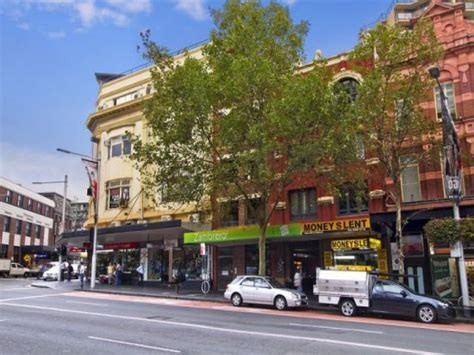
Hyde Metropolitan
55-storey premium mixed-use development adjacent to Hyde Park. 168 luxury residential apartments with modern architecture and views over Hyde Park, Sydney Harbour and the city. Designed by Candalepas Associates with high-end amenities.
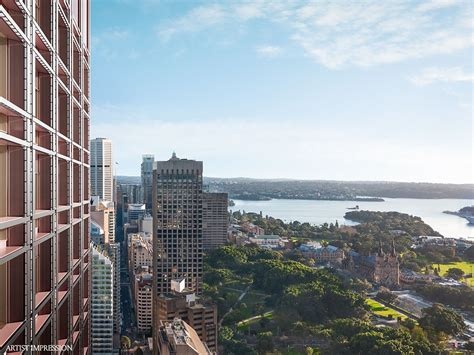
The Terraces at Paddington Retirement Village
Redevelopment of the former Scottish Hospital site into an over-55s community comprising a 100-bed residential aged care facility including a 23-bed dementia unit, 79 independent living units and shared amenities (cafe, salon, cinema, pool and gym). Completed in 2019 by Multiplex for Presbyterian Aged Care; ownership and operations transferred to Anglicare Sydney in Nov 2023.

Hakoah White City Redevelopment
Redevelopment of the former White City Tennis Club into a community sports and culture hub open to all, featuring 9 tennis courts, a full size football field with grandstand, 25m heated pool plus learn to swim pool, multi use courts, gym and fitness studios, food and beverage, meeting spaces and parking for about 270 cars. Construction paused in 2024 during a builder transition and is now targeting first half 2026 opening, with recent design refinements and security upgrades.
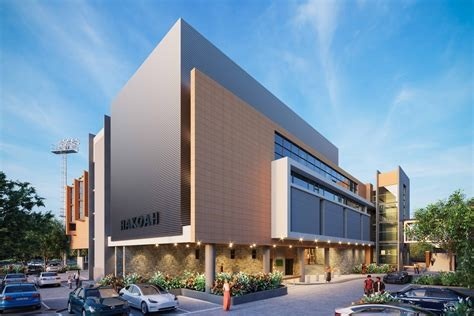
Moore Park Precinct Village
A mixed-use development transforming an existing parking area into a village-style precinct in Moore Park, featuring public open spaces, food and beverage offerings, entertainment facilities, a children's play area, community spaces, and an underground multi-level carpark with approximately 1500 spaces adjacent to Allianz Stadium and the Sydney Cricket Ground.
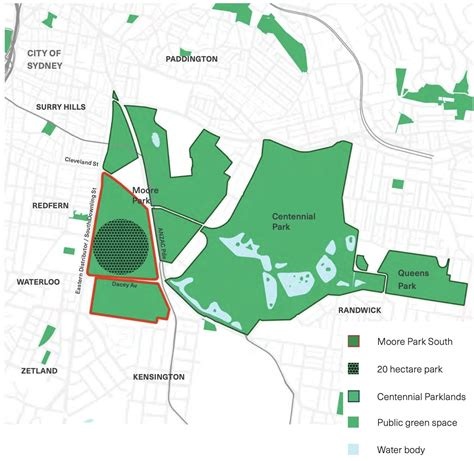
Oxford & Foley Mixed-Use Development
A $200 million mixed-use precinct revitalizing Oxford Street with 9,200 sqm of commercial space including 1,600 sqm for cultural and creative uses, 2,300 sqm of retail, a 75-room boutique hotel, and the activation of Foley Street as a laneway dining and entertainment area. The development combines heritage restoration with modern additions across three buildings.
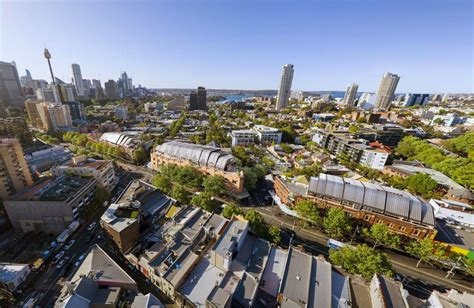
Moore Park South Transformation
NSW Government proposal to convert about 20 hectares on the western side of Moore Park Golf (north of Dacey Ave) into new public parkland for informal recreation, nature play and community facilities, while retaining a minimum 9-hole golf course, driving range and clubhouse. Early engagement closed in April 2024 with a `What we heard' report released in December 2024; preliminary design and planning funding allocated in the 2024-25 NSW Budget with further design engagement planned in 2025 and golf course reconfiguration proposed after the current operating agreement expires in mid-2026.

Employment
The labour market in Paddington - Moore Park shows considerable strength compared to most other Australian regions
Paddington-Moore Park has an educated workforce with significant representation in technology. Its unemployment rate is 3.2%, lower than Greater Sydney's 4.2%.
Employment growth over the past year was estimated at 2.3%. As of June 2025, 10,864 residents are employed, with a participation rate of 72.3% compared to Greater Sydney's 60.0%. Key industries include professional & technical (2.1 times regional level), finance & insurance, and health care & social assistance. Construction is under-represented at 4.2%, compared to Greater Sydney's 8.6%.
The worker-to-resident ratio is 0.6, indicating above-average local employment opportunities. Over the past year, employment increased by 2.3% while labour force grew by 2.4%, raising unemployment by 0.1 percentage points. In contrast, Greater Sydney saw employment growth of 2.6% and labour force growth of 2.9%. State-level data to Sep-25 shows NSW employment contracted by 0.41%, with an unemployment rate of 4.3%, compared to the national rate of 4.5%. Jobs and Skills Australia forecasts national employment growth of 6.6% over five years and 13.7% over ten years. Applying these projections to Paddington-Moore Park's industry mix suggests local growth of approximately 7.7% over five years and 15.1% over ten years.
Frequently Asked Questions - Employment
Income
The economic profile demonstrates exceptional strength, placing the area among the top 10% nationally based on comprehensive AreaSearch income analysis
AreaSearch's data for financial year 2022 shows Paddington - Moore Park has high incomes nationally. The median income is $84,541 and the average is $176,804. This compares to Greater Sydney's median of $56,994 and average of $80,856. Based on Wage Price Index growth of 10.6% since financial year 2022, estimates for March 2025 are approximately $93,502 (median) and $195,545 (average). Census data shows incomes in Paddington - Moore Park rank highly nationally, between the 95th and 99th percentiles. Income brackets indicate 38.8% of locals earn over $4,000 weekly, differing from broader area patterns where $1,500-$2,999 dominates with 30.9%. High earners make up 48.5% of the population above $3,000/week. Housing costs consume 17.9% of income, but strong earnings place disposable income at the 94th percentile nationally. The area's SEIFA income ranking places it in the 10th decile.
Frequently Asked Questions - Income
Housing
Paddington - Moore Park displays a diverse mix of dwelling types, with a higher proportion of rental properties than the broader region
In Paddington-Moore Park, evaluated at the latest Census, dwelling structures comprised 7.0% houses and 93.0% other dwellings (semi-detached, apartments, 'other' dwellings), compared to Sydney metro's 18.3% houses and 81.8% other dwellings. Home ownership in Paddington-Moore Park stood at 26.8%, with mortgaged dwellings at 25.4% and rented ones at 47.7%. The median monthly mortgage repayment was $3,800, above Sydney metro's average of $3,600. The median weekly rent figure was $590, compared to Sydney metro's $670. Nationally, Paddington-Moore Park's mortgage repayments were significantly higher than the Australian average of $1,863, and rents substantially above the national figure of $375.
Frequently Asked Questions - Housing
Household Composition
Paddington - Moore Park features high concentrations of lone person households and group households, with a lower-than-average median household size
Family households constitute 53.1% of all households, including 19.7% couples with children, 26.3% couples without children, and 6.3% single parent families. Non-family households account for the remaining 46.9%, with lone person households at 38.7% and group households comprising 8.1%. The median household size is 2.1 people, which is smaller than the Greater Sydney average of 2.3.
Frequently Asked Questions - Households
Local Schools & Education
Paddington - Moore Park shows strong educational performance, ranking in the upper quartile nationally when assessed across multiple qualification and achievement indicators
Paddington-Moore Park's residents aged 15+ have a higher university qualification rate of 65.7% compared to Australia's 30.4% and NSW's 32.2%. Bachelor degrees are most prevalent at 42.9%, followed by postgraduate qualifications (19.1%) and graduate diplomas (3.7%). Vocational pathways account for 15.6%, with advanced diplomas at 8.6% and certificates at 7.0%. Educational participation is high, with 25.6% of residents currently enrolled in formal education: 8.1% in tertiary, 6.6% in primary, and 5.4% in secondary.
Six schools operate within Paddington-Moore Park, educating approximately 2,738 students. The area's educational performance is exceptional (ICSEA score: 1173). Educational provision is balanced with four primary and two secondary schools serving distinct age groups.
Frequently Asked Questions - Education
Schools Detail
Nearby Services & Amenities
Transport
Transport servicing is high compared to other areas nationally based on assessment of service frequency, route connectivity and accessibility
Paddington-Moore Park has 56 active public transport stops, serving a mix of light rail and bus routes. These stops are covered by 24 individual routes, collectively facilitating 12,540 weekly passenger trips. The area's transport accessibility is rated excellent, with residents typically located 127 meters from the nearest stop.
Service frequency averages 1,791 trips per day across all routes, equating to approximately 223 weekly trips per individual stop.
Frequently Asked Questions - Transport
Transport Stops Detail
Health
Paddington - Moore Park's residents boast exceedingly positive health performance metrics with very low prevalence of common health conditions across all age groups
Paddington-Moore Park had excellent health outcomes, with very low prevalence of common health conditions across all ages. The private health cover rate was exceptionally high at approximately 91% of the total population (14,186 people), compared to the national average of 55.3%.
The most prevalent medical conditions were asthma and mental health issues, affecting 6.9 and 6.6% of residents respectively. A total of 76.4% of residents declared themselves completely clear of medical ailments, slightly lower than the Greater Sydney average of 77.6%. The area had a lower proportion of seniors aged 65 and over at 13.9% (2,169 people) compared to Greater Sydney's 16.4%. Despite this, health outcomes among seniors were strong and broadly in line with the general population's health profile.
Frequently Asked Questions - Health
Cultural Diversity
Paddington - Moore Park was found to be more culturally diverse than the vast majority of local markets in Australia, upon assessment of a range of language and cultural background related metrics
Paddington-Moore Park has a higher level of cultural diversity than most local markets, with 13.7% of its population speaking a language other than English at home and 32.4% born overseas. The dominant religion in Paddington-Moore Park is Christianity, making up 41.6% of the population there. However, Judaism is significantly underrepresented compared to Greater Sydney, comprising only 3.1% of Paddington-Moore Park's population versus a regional average of 16.0%.
The top three ancestry groups in Paddington-Moore Park are English (27.6%), Australian (18.6%), and Irish (11.5%). Notably, French people make up 1.4% of the population compared to 1.5% regionally, Polish people comprise 1.2%, versus 1.9%, and Hungarian people account for 0.5%, against a regional average of 1.2%.
Frequently Asked Questions - Diversity
Age
Paddington - Moore Park's population is slightly younger than the national pattern
Paddington-Moore Park's median age is 36 years, nearly matching Greater Sydney's average of 37 years and slightly under the Australian median of 38 years. Compared to Greater Sydney, Paddington-Moore Park has a higher proportion of residents aged 25-34 (22.6%) but fewer residents aged 5-14 (8.0%). This concentration of 25-34 year-olds is well above the national average of 14.5%. Between the 2021 Census and the present, the proportion of residents aged 15 to 24 has grown from 9.9% to 11.8%, while the proportion of those aged 45 to 54 has declined from 13.8% to 12.2%. The proportion of residents aged 65 to 74 has also decreased, from 8.0% to 6.5%. Demographic projections indicate significant changes in Paddington-Moore Park's age profile by 2041. The 55-64 age group is projected to grow the most, adding 400 residents to reach a total of 2,115. Conversely, both the 35-44 and 0-4 age groups are expected to see reduced numbers.






